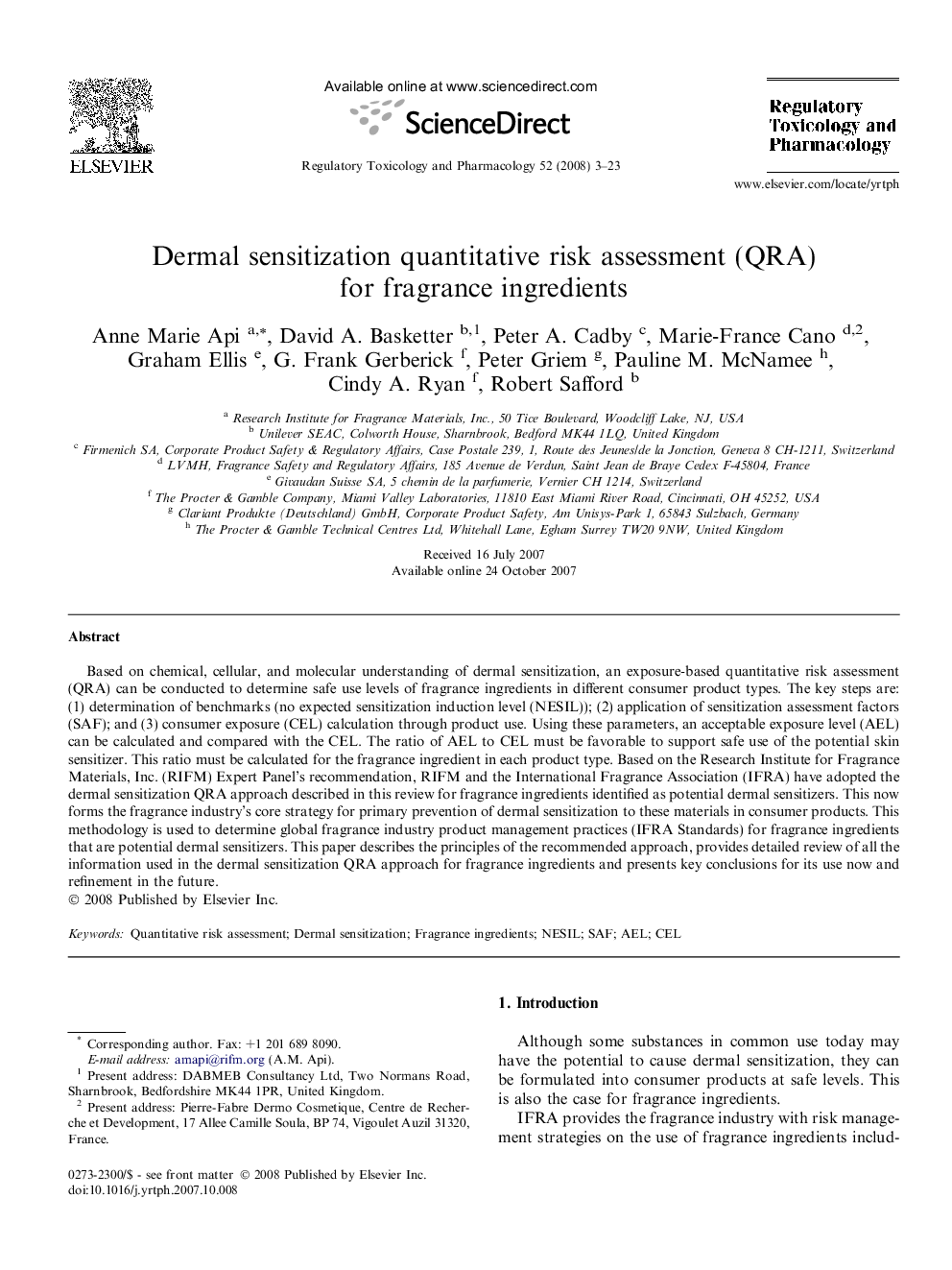| Article ID | Journal | Published Year | Pages | File Type |
|---|---|---|---|---|
| 2592768 | Regulatory Toxicology and Pharmacology | 2008 | 21 Pages |
Based on chemical, cellular, and molecular understanding of dermal sensitization, an exposure-based quantitative risk assessment (QRA) can be conducted to determine safe use levels of fragrance ingredients in different consumer product types. The key steps are: (1) determination of benchmarks (no expected sensitization induction level (NESIL)); (2) application of sensitization assessment factors (SAF); and (3) consumer exposure (CEL) calculation through product use. Using these parameters, an acceptable exposure level (AEL) can be calculated and compared with the CEL. The ratio of AEL to CEL must be favorable to support safe use of the potential skin sensitizer. This ratio must be calculated for the fragrance ingredient in each product type. Based on the Research Institute for Fragrance Materials, Inc. (RIFM) Expert Panel’s recommendation, RIFM and the International Fragrance Association (IFRA) have adopted the dermal sensitization QRA approach described in this review for fragrance ingredients identified as potential dermal sensitizers. This now forms the fragrance industry’s core strategy for primary prevention of dermal sensitization to these materials in consumer products. This methodology is used to determine global fragrance industry product management practices (IFRA Standards) for fragrance ingredients that are potential dermal sensitizers. This paper describes the principles of the recommended approach, provides detailed review of all the information used in the dermal sensitization QRA approach for fragrance ingredients and presents key conclusions for its use now and refinement in the future.
